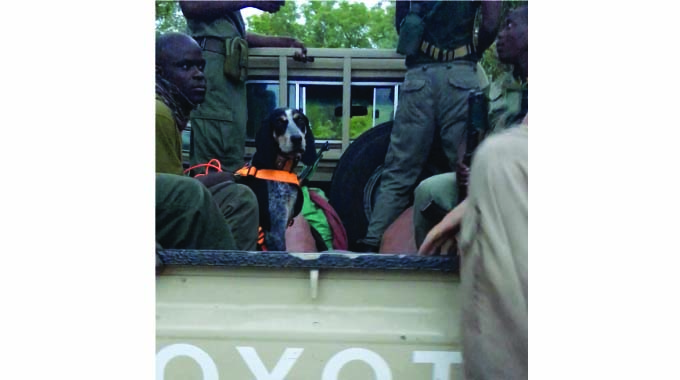Wildlife conservation driving sustainable tourism growth

Leonard Ncube, Victoria Falls Reporter
COLLABORATIVE efforts by various conservation stakeholders in Victoria Falls have significantly enhanced the protection of wild animals from poaching activities, thereby promoting tourism sustainability.
Alongside the World’s Natural Wonder, Victoria Falls, and various leisure activities in the country’s tourism capital, wildlife is a major tourist drawcard and contributes significantly to tourism receipts through game drives and animal interaction services provided by various tour operating companies.
In August 2020, President Mnangagwa launched the National Tourism Recovery and Growth Strategy to reboot the tourism sector following the devastating effects of Covid-19.

President Mnangagwa
The plan hinges on the country’s vision to be an international tourist destination of choice, leveraging the sustainable use of its natural heritage such as culture and wildlife.
Zimbabwe is targeting a US$5 billion tourism industry by 2025 and strategies such as promoting domestic tourism, wildlife conservation, and others are bearing fruit.
Various wildlife conservation organisations such as Victoria Falls Wildlife Trust (VFWT), Wildlife Initiative Trust Africa (WITA), Victoria Falls Anti-Poaching Unit (VFAPU), Wild is Life and others have partnered with the Zimbabwe Parks and Wildlife Management Authority (Zimparks), Forestry Commission, Veterinarians for Animal Welfare Zimbabwe, Zambezi Horseback Safaris, and local authorities in wildlife management programs.
Hundreds of wild animals have been rescued from snares while scores of suspected poachers have been arrested and convicted by the courts as a result of anti-poaching activities.
Recently the Forestry Commission together with Zimparks and police rescued an elephant calf that had been roaming in Lupinyu near Victoria Falls Airport suspected to be part of the herd of six elephants that was found dead in Fuller Forest recently.
WITA and its anti-poaching partners recently used its K9 Unit to help Zimparks to track down a suspected group of seven poachers that had been spotted in the Zambezi National Park, bordering Matetsi Unit Seven.
Although no arrest was made, the suspected poachers escaped and exited the park after noticing they were being tracked by anti-poachers and dogs.
VFWT rescued a honey badger that had been hit by a vehicle, darted a buffalo and cut off a PVC pipe on its pastern (hoove) using a battery-powered angle grinder, a zebra that had a double cable around its neck, removed a wire snare from an elephant calf in Kazungula and a buffalo in Zambezi National Park, among several incidents.

ZimParks
VFAPU was established in 1999 to combat poaching in the region working with Zimparks and other organisations and assisting local authorities in fighting the menace of poaching.
Wood and fish poaching, and cases of trapping of game for bush meat as well as poaching of elephants and rhinos are prevalent and a threat to the diversity of wildlife in Africa.
VFAPU founder Mr Charles Brightman said Zimbabwe’s wildlife is one of the country’s greatest assets and needs to be protected. He said more wildlife means more tourism and more jobs.
“We are grateful to be able to work with Zimparks, Victoria Falls City Council, and police, which is an illustration of what can be achieved when we all work together for a common goal of wildlife conservation,” he said.
“Over the years working together VFAPU has removed thousands of snares from the bush around Victoria Falls and apprehended hundreds of poachers and helped save hundreds of animals injured by poachers.”
Mr Brightman said Victoria Falls survives essentially on tourism and besides the Rainforest, tourists are attracted to Zimbabwe’s wildlife, which then needs to be conserved as part of Zimbabwe’s natural heritage for future generations.
After being rescued, the animals go through soft release conditioning process and some are collared for monitoring. The anti-poaching units also collar some vultures, which help detect hotspots for wildlife poaching and alert us to any carcasses and cases of wildlife poisoning.
In a statement, Forestry Commission director general Mr Abednico Marufu said an elephant calf rescued by the Forestry Commission Protection Unit together with Zimparks and police on Christmas day had been airlifted to Wild is Life nursery in Harare for close monitoring and care.
“The unit was alerted of an elephant calf that had been found roaming around Lupunyu shops and reacted and relocated the calf to Wild is Life in Pandamasue forest for stabilisation and care. The swift reaction served the calf from being killed by poachers or members of the community,” he said.

Victoria Falls
Tourism operators have welcomed the collaboration as good for tourism. “We are Victoria Falls Initiative” co-ordinator Ms Shelley Cox said the surrounding forest area is an important component of the Victoria Falls region protecting large tracks of forest cover and biodiversity, forming part of Kavango Zambezi Transfrontier Conservation Area.
“It’s tragic to hear about the loss of an entire elephant herd. However, it really is outstanding collaborative work by Forestry Commission, Zimparks, police and Wild is Life to have reacted so quickly and professionally to rescue the elephant calf and get necessary veterinary care for it,” she said.
This type of collaboration between authorities and private sector is what will help conserve and protect the biodiversity of this region and its wildlife not only as vital drawcards for tourists and tourism recovery but also as a vital component of Zimbabwe’s tourism economy.” — @ncubeleon.











Comments